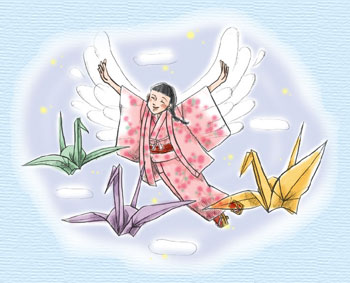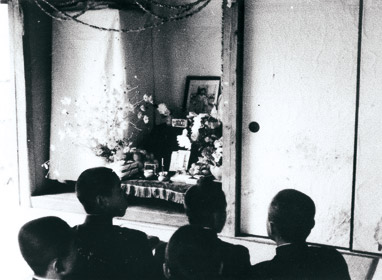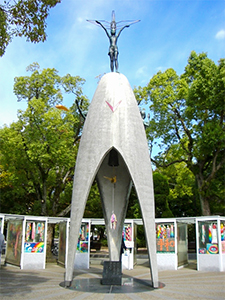5 The Birth of Children's Peace Monument
1956-
Sadako's death came as a tremendous shock to the members of the Bamboo class. Many of them, like Sadako, had experienced the atomic bombing.
They were filled with fear, regret, and a sense of helplessness.

What can we do?
After Sadako died, her Bamboo classmates said to each other, "Let's do something for Sadako." That they, her friends, were able to do nothing for her left a painful feeling in their hearts.
Someone said, "Can we erect a gravestone for her? If it is nearby, we can visit it every day."

Sadako's classmates take action.
"What if we make a monument in Peace Memorial Park? Not just for Sadako, but for all the children who died from the atomic bomb."
"Do we have what it takes to do something like that?" The students were worried.
"But I really want to do something for Sadako." "I want to get rid of atomic bombs." These were the emotions that moved the group to action.
Children around Japan cooperate with the movement.
Sadako's former Bamboo classmates began a movement to raise funds for a monument. Their call elicited a huge response that they had not anticipated. More than 3,000 schools around Japan sent money and letters saying, "Please use this to help build the monument." In January 1957, it was officially decided to build the Children's Peace Monument in Peace Memorial Park.
The statue was completed on Children's Day ( 5 May ) in 1958, two years after Sadako Sasaki's death.

Though Sadako and the other children who had passed away would not return, the inscription carved into the stone in front of the monument at least carried the hope, "Let no more children fall victim to an atomic bombing."
This is our cry.
This is our prayer.
For building peace in the world.

